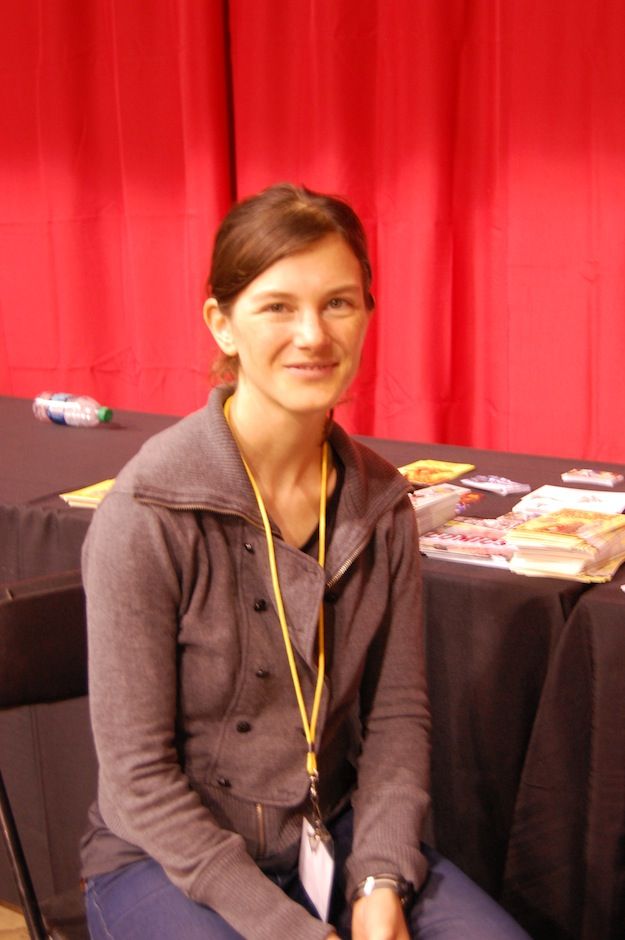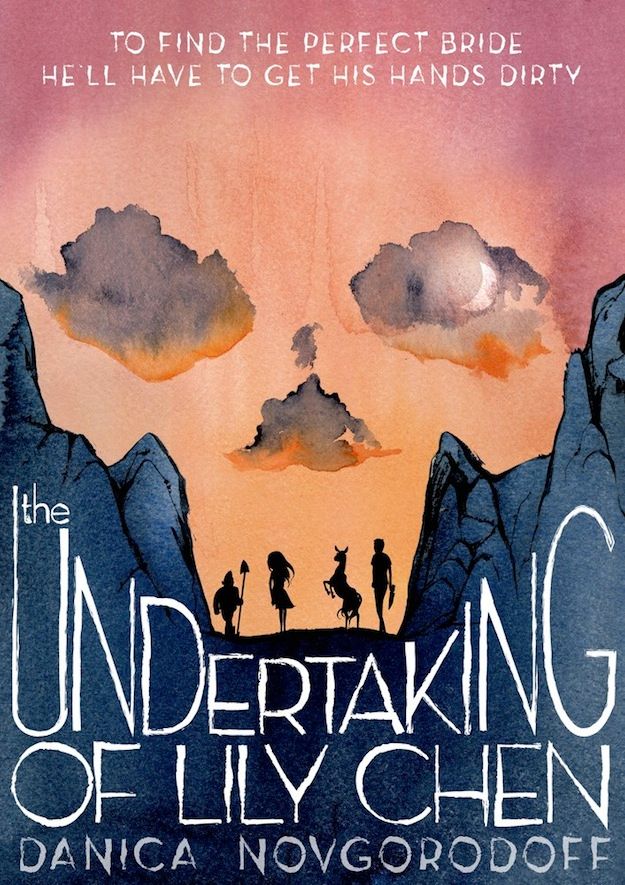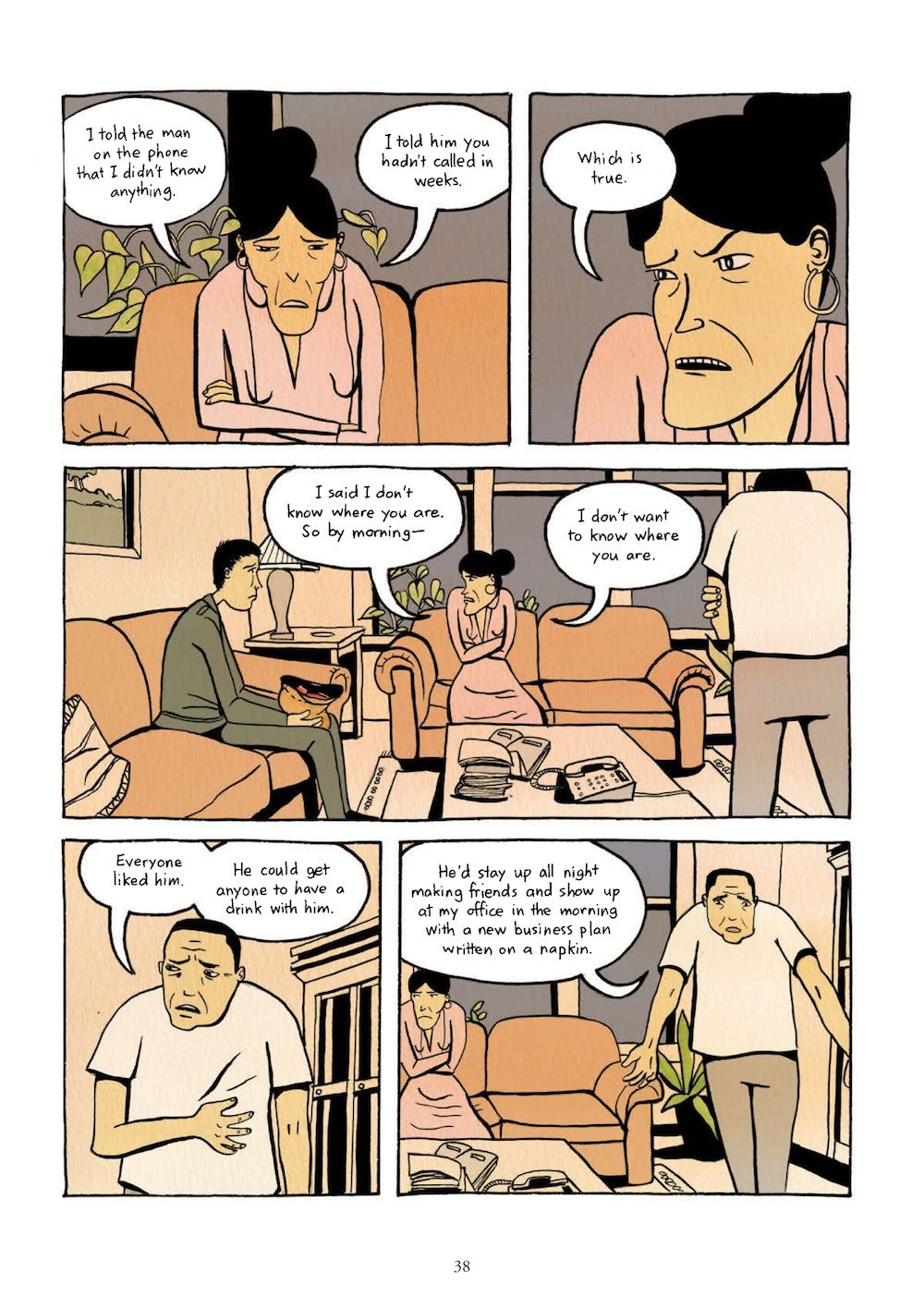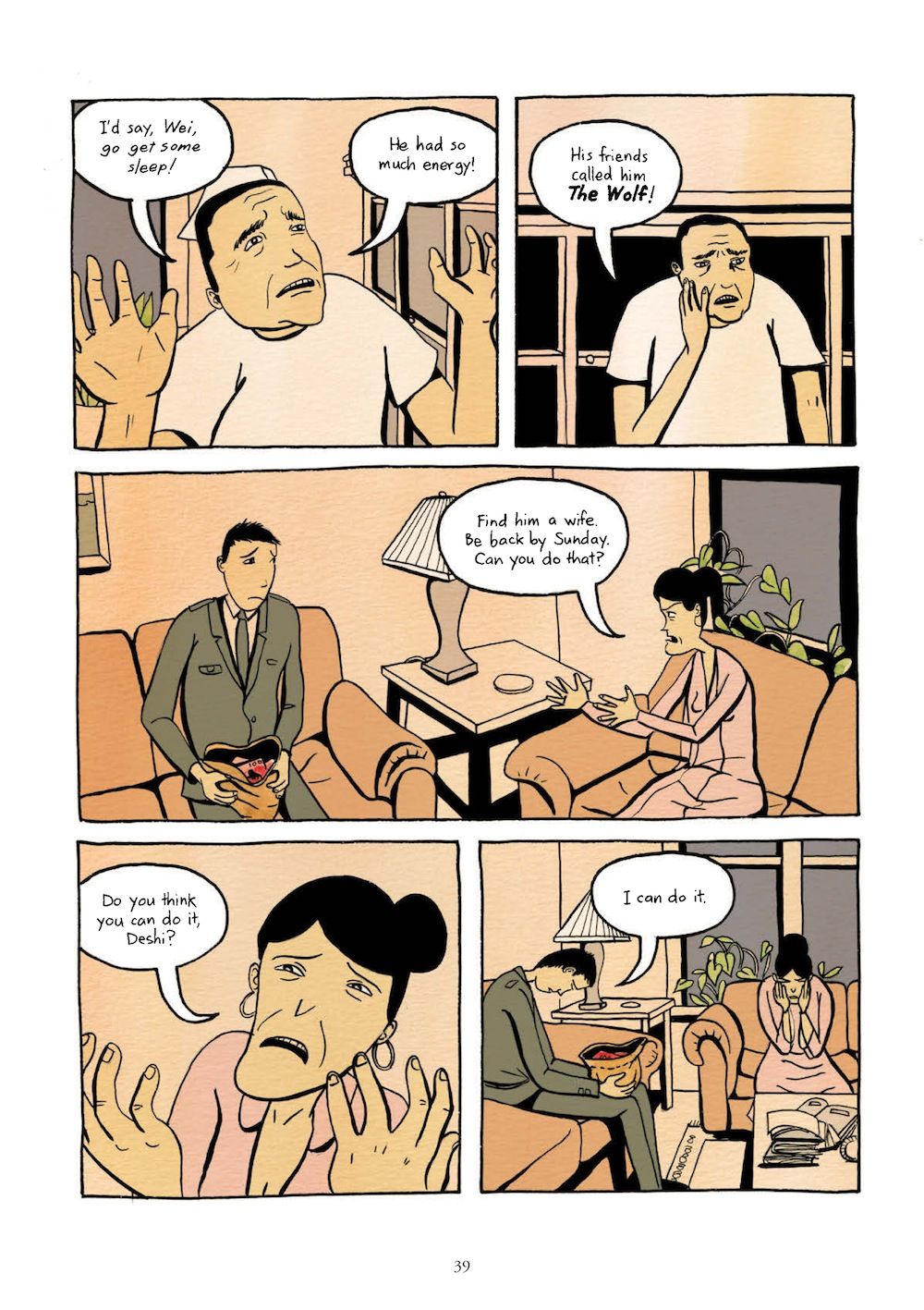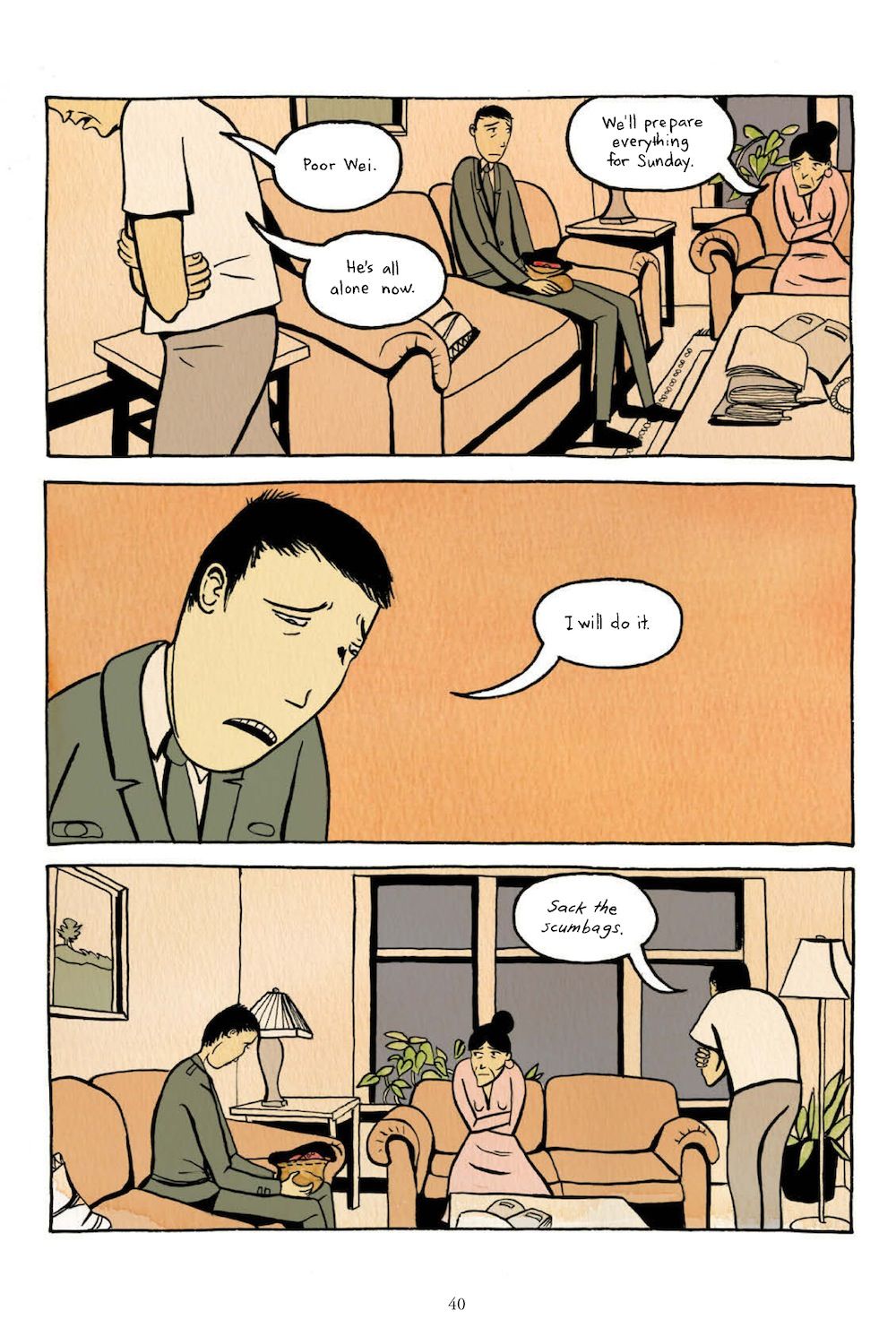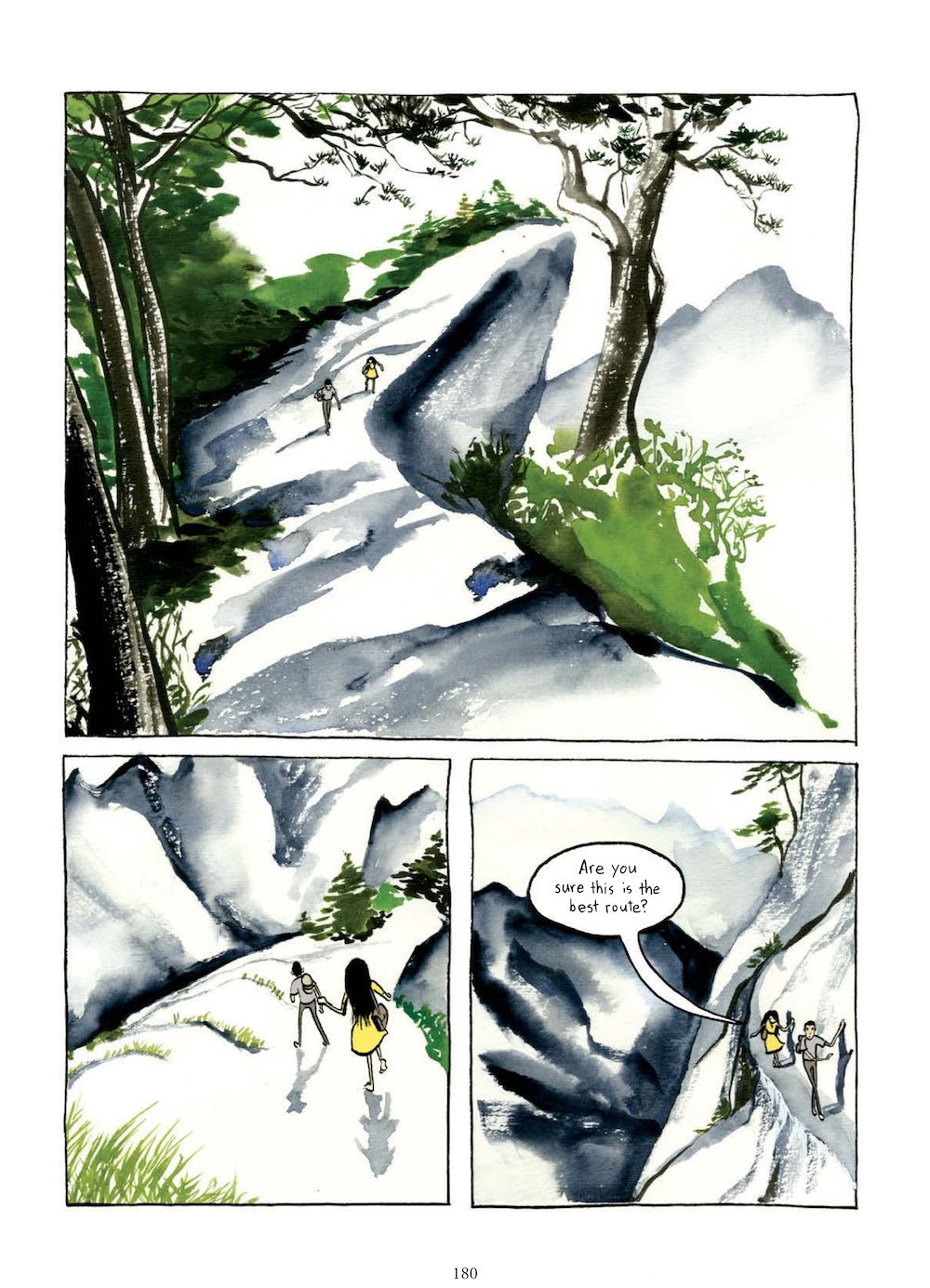Danica Novgorodoff's The Undertaking of Lily Chen is a road story, a love story, and something completely different as well. Set in modern-day China, it follows the quest of Deshi, a young man whose parents blame him for his brother's death, on a quest to find a ghost bride for his brother, the corpse of a young woman who will be buried with him and keep him company in the afterlife.
Deshi's attempts to find a fresh corpse are a washout, and he ends up instead with the very much alive Lily Chen, who is only too happy to escape her hardscrabble existence — and has no idea what Deshi has in store for her.
Novgorodoff deftly mixes elements of traditional and modern-day China in her story, and she illustrates it with beautifully rendered watercolors. I had a chance to talk to her about it last weekend at MoCCA Arts Fest.
Brigid Alverson: How did the story evolve?
Danica Novgorodoff: I started writing it based on these two characters I had I my head, Deshi and Mr. Song, so it took me a while to find the right character for Lily. I knew there would be a girl. I had originally conceived of it as a kidnapping story, and it really didn't work out the way I had written it because in that situation she was not a powerful character, and I didn't like that. So I kind of rewrote the plot based on her character, based around who I wanted it to be. I also thought of it as a Western -- in a classic Western, there's a big shootout and everybody dies in the end. That's how I first wrote it, with everyone dying in the end. It just wasn't the story I wanted it to be. I don't need a happy ending, I don't necessarily need that, but I eventually realized that at the core of this story was a love story, not a death story. I didn't think of it as a western, but I still felt the relationship between the two characters really came through. I rewrote the ending several times until I found the ending I thought worked out.
That ending is pretty crazy. I actually was reading along thinking, "How will she get the characters out of this situation?
It came to me the way it might come to the character: How could I possibly resolve this? Then think of the craziest way to get out of a terrible situation.
Related: Novgorodoff Explores "The Undertaking of Lily Chen"
There is an abacus in your chapter headings. What was that about?
The abacus was the number of days left. He had one week left to find the bride. That was the countdown.
The story has a real point of convergence, with different characters heading in the same direction: Mr. Song, Lily's father and, of course, Lily and Deshi. Was that hard to put together?
It took a lot of coordination, not just plot-wise but visually. I had to map out where this was taking place, which side of the river they were on, which direction everyone is coming from, knowing who is coming from the east and who is coming from the west, to choreograph how everyone comes together in the end, and how they go back to Deshi's hometown.
In terms of them meeting all the different characters along the way, it was like I was on a journey and these different people pop up. That was a fun journey for me as a writer.
Like the two people who were practicing divination? What was up with them? And were they both European?
I first read about oracle bones in a book by Peter Hessler, and I just loved that idea. The female fortuneteller is Chinese, and the man who is the fortune teller is Russian. I named them after my grandparents, who are Chinese and Russian. I wanted them to meet people who would force the two characters, Deshi and Lily, to open up to each other, to force them to talk. To expose themselves and become vulnerable to each other, reveal their innermost feelings in ways that strangers wouldn't if left to themselves.
What about the scene where a group of monks see a ghost trailing Deshi and brings him in to the temple, and it sort of turns into a crazy party?
That was inspired by my first trip to China. I was trekking with a friend from Hong Kong through the mountains of southern China. We went to this small town with a temple, and we got there at night, and we were just walking around the outside of the temple and this woman came to us and said she thought we were ghosts. I don't speak Chinese — it had to be translated — but what she said to us was she had these pieces of ribbon she tied around our wrists to prove we weren’t ghosts. That was the strangest experience. I felt like we were in a completely different world, culturally and spiritually. There were a lot of monks around that area, we met these monks who were a bunch of young guys, and they didn't seem particularly ascetic — they were at a party — so those experiences inspired that scene. The monks brought Deshi into this cultural reality; they kind of force him to confront his ghost and figure out why the ghost is following him around — why do you care about this tradition, why do you feel this guilt?
The story opens with the scene in which Deshi fights with his brother and his brother is killed. At the time, we don't know who they are and what the context is. Later on, Deshi tells the story to Lily and fills in the missing details. Did you know from the beginning that you were going to repeat that first sequence?
I didn't know. It's always tricky for me to include flashbacks — it's hard to weave them in in a way that doesn't seem like exposition — but I wanted to give a little bit of that backstory at the beginning and I had to find a way for him to need to tell Lily the entire story to get to the point where he has to tell her or else, so I wanted to bring that back later in a really important moment when she has to know why he is doing these things and the reader has to know why he is doing these things at the same time.
Your art in this book is very unusual. Did you work in watercolors?
Yes. Some digital coloring as well, but mostly watercolors.
There is a passage in the book where you simply have a series of pages each with one ghost face on it. Why did you devote so much space to that?
In the graphic novel, I really like to have moments when time slows down to a stop and you really have to linger on the art. A lot of people read the text and skim over the images, and I like to, at an important moment when it makes sense to do so, have moments that jump off of that linear narrative and make you pause and look at the art a little bit. That is a moment when Deshi is having that transcendent experience of trying to look at the ghost and confront his own guilt and grief, so I wanted it to have a haunting quality that I couldn't find in the confines of a panel — open up the narrative of the story in a nonlinear way but also give the images more space and get that ghostly, haunted atmosphere into the artwork.
The story is set in modern times, yet Deshi and Lily travel by mule. Why did you have them do that?
Because they were traveling very small trails, I wanted them to be able to take the mule and get that very western feeling.
What are you working on now?
I'm at the beginning stages of a lot of different projects. I can't say yet what will be the big new graphic novel. I have several ideas: I have been thinking a lot about nonfiction graphic novels lately, and I am also working on several children's books. I have other ideas for books that I don't know if they will be graphic novels or some other form of text and images; I don't know if it will be exactly that graphic novel format.


